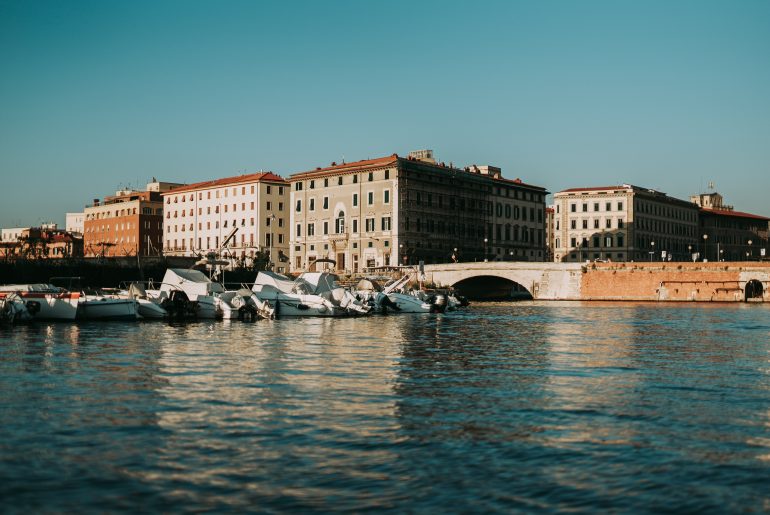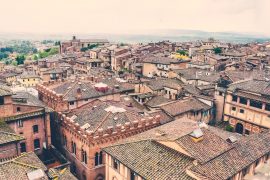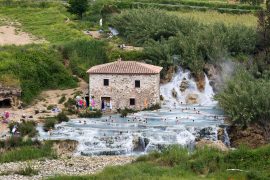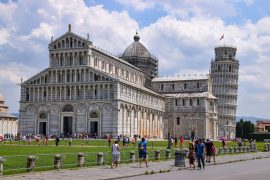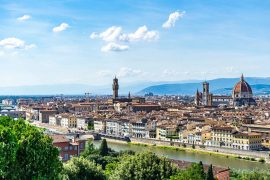On the northern coast of the central part of the Apennine Peninsula lies Livorno, a city that captivates tourists every year with its complex beauty. Anyone intrigued by the unusual combination of medieval monumental buildings with the contemporary character of an industrial coastal city should definitely set Livorno as a destination.
Livorno's uniqueness can be seen in the sheer numbers. The city is slightly larger than the heart of Tuscany - the Florence - but has more than twice the population density. This does not mean that life in Livorno flows slowly, on the contrary. It is here that one of Italy's largest ports is located, making the city an important link in the national trade chain, while bringing hundreds of thousands of tourists from all over the world here every year.
Although Livorno gives the impression of a textbook Italian city with a solid medieval architectural foundation, the reality is much more complicated. The city suffered heavily from bombing during World War II, so much of the buildings were reconstructed based on the original plan. Today's Livorno is directly vibrant and combines modern infrastructure with historical heritage. What to see and do in Livorno? Check out our guide to the city!
Attractions in Livorno
This Tuscan port city offers tourists a mass of attractions of a varied nature. There are beautiful rocky beaches, interesting monuments and art galleries, as well as typically entertaining places that will please nightlife enthusiasts.
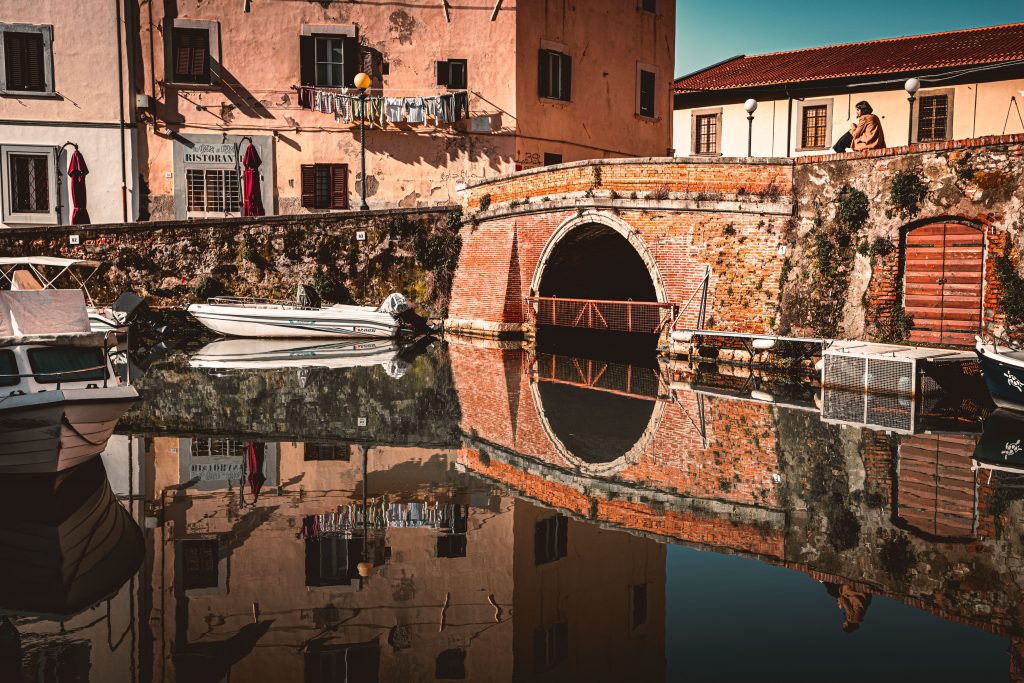
Porto Industriale and Porto Mediceo
The tour should start at the port, which is located at the western end of the old town. The new part of the port virtually never sleeps - ships dock and depart, and ferries transport people to the nearby islands of Corsica, Elba and Sardinia. A significant area is occupied by Porto Industriale - It is in this part of the port that the largest vessels are handled. The old part of the port, also known as the Porto Mediceo, is designed primarily for smaller vessels, as well as luxury yachts. The place is quite a treat for all sea lovers.
Fortezza Vecchia
In the northern part of Livorno's old port is an architectural gem that dates back to the first half of the 16th century. It is Fortezza Vecchia - An old fortress, built on the site of an old fortress from the 11th century. Standing out from the 16th century fortress is the cylindrical tower, which was part of the original castle that stood on the site. The tower offers a panoramic view of the port and the city. The fortress is open to tourism - due to its proximity to the port, it is frequented by cruise ship passengers with only a short stop in Livorno.
Venezia Nuova
About 15 minutes on foot from Porto Mediceo There is another interesting attraction on the tourist map of Livorno. Venezia Nuova, as it is referred to, dates back to its origins in the 17th century. At that time, the need for a new district arose, as Livorno's population was steadily growing at the time. However, the area where the expansion was planned was crisscrossed by numerous moats that surrounded the walls of the old city. These moats played an important role in the city's infrastructure, as they allowed goods to be transported directly inland from the port. So in order to develop this difficult terrain for the needs of the population, a construction strategy was borrowed directly from Venice and adapted to local needs. The result is one of the most spectacular parts of Livorno. The district can be explored in 2 ways - by boat and on foot. With the former method, you can admire from an interesting perspective the Fortezza Nuova, a fortress surrounded by water, which is another Livorno attraction. On the other hand, visiting the New Venice On foot you can visit St. Catherine Church, a baroque building that rises above the Piazza dei Domenicani.
Terrazza Mascagni
Those looking for a good, exposed vantage point on the seashore should be interested in the following Terrazza Mascagni. It is a vast terrace with an extremely photogenic ground that resembles a checkerboard pattern. Built in the late 1920s, the terrace is a popular meeting place for Livorno residents, as well as an important point on the itinerary of local athletes. It offers an impressive panorama of the Tyrrhenian Sea, from which the terrace is separated by a long white balustrade. The place is recommended to visit especially before sunset - tourists with cameras will have their hands full here.
Acquario di Livorno
In the immediate vicinity of Terrazza Mascagni is another tourist attraction. Acquario di Livorno, which is a modern aquarium that showcases marine organisms living in the Mediterranean Sea and beyond. Here you can see, among others, sharks - the blacktip shark and the leopard shark, in addition, the Livorno aquarium is home to turtles and seahorses, as well as a multitude of smaller, colorful fish and underwater flora and fauna. Ticket prices are €16 for an adult and €10 for children, respectively. It is worth mentioning that these prices apply to the purchase of tickets at the box office. Buying tickets online can save a lot - an adult ticket purchased online costs 12€, and a child ticket costs 9€. For more information, visit the official website here.
Museo Civico
Art lovers should definitely visit the southern part of the new city, where there is a Museo Civico, which collects the works of a Tuscan group of 19th-century painters called the Macchiaioli. The movement was strongly influenced by the Impressionist movement. Macchiaioli was headed by painter Giovanni Fattori, whose paintings can also be admired in this gallery. The museum is an attractive place not only because of its rich collection of paintings, but also because of its architectural qualities. Villa Mimbelli, where the Museo Civico is located, is distinguished by its neo-Renaissance style, stucco ceilings and charming frescoes. The building is surrounded by a beautiful garden. The price of admission to the museum is €6. The facility is open from Tuesday to Sunday.
Santuario di Montenero
On the southern outskirts of Livorno, away from the city's main attractions, is the Santuario di Montenero, or the Shrine of Our Lady of Grace. This religious complex located in the hills was established as a tiny shrine in the early 17th century and gradually evolved until 1818, when it gained the status of a basilica. The shrine offers visitors to admire a rich collection of so-called votive offerings, or symbolic objects that were offered by the faithful for a specific intention. Most often, these items were hung on the altar. Among the most famous votive offerings from the site are a pair of slippers made of red velvet and a golden corset. A great advantage of the shrine is its location - from the terrace you can admire the surroundings and beautiful sunsets.
How to get to Livorno?
Most tourists arrive in Livorno aboard cruise ships, but the best method of transportation from Poland would be by plane or your own car. The overland road largely follows the European route E45, which, with moderate traffic, can get you to your destination in a dozen hours from the German border.
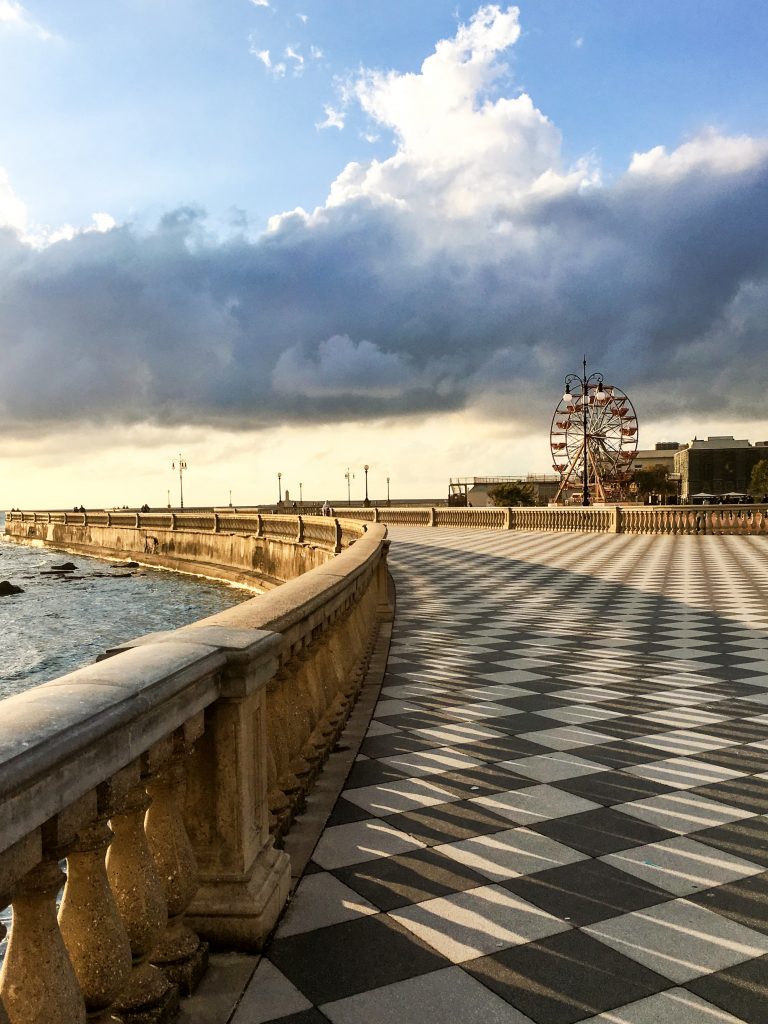
A much faster and more convenient form of transportation will be air travel. Livorno does not have direct flight connections to Poland, but there are cheap Ryanair airlines flying to nearby Pisa from Warsaw, Gdansk, Krakow and Wroclaw. It is a direct connection and the flight time is about 2 hours. Ticket prices start at several dozen zlotys and it is worth looking out for promotions, so characteristic of this carrier.
The journey from Pisa to Livorno is already very simple - the easiest way is aboard the train Trenitalia, the transit time is about 15 minutes. To get from the airport to the central station, you can take a cab or a bus. Tourists with hand luggage will have no problem getting to the station on foot - the distance between these facilities is about 2 km. There are dozens of trains a day on this route, so there are no difficulties in synchronizing the arrival in Pisa with the departure of the train.
Beaches
Livorno and the surrounding area are famous for their charming beaches, which are described by many tourists as the most beautiful in all of Tuscany. They are characterized by a rocky coastline - the rocks are also under water, making the area excellent for diving. It is worth noting that the substrate of the beaches in this province varies - in the south of Livorno the beaches are rocky, while in the center they are generally sandy. When looking for attractive beaches, it is worth looking at the Ardenza district. It is located here, for example. Felciaio Beach - A sandy beach with a parking lot nearby (cost 8€ all day). The beach is narrow, surrounded by cliffs, the water here is crystal clear.
Most of the beautiful beaches on the south side of the city are in the Calafuria reserve - It is about 10 km from the center of Livorno. The easiest way to get here is by car or public transportation. The vast majority of the beaches are open to the public, many are wild, and dog swimming is allowed on some of them. One of the more picturesque, yet intimate beaches is the Cala del Leone, having the shape of a small cove with a rocky surface. The beach is surrounded by quite high cliffs and a path among the trees leads to it. The route is quite demanding, so the place is rather discouraged for families with small children.
Less than 30 km from Livorno is the town of Rosignano Solvay, and in it the famous white beach Spiagge Blanche. You can get there by car or train in about 20 minutes. It is really worth it, because the place is unique. The scenery of Spiagge Blanche is reminiscent of a luxury Caribbean resort - the almost white sand contrasts with the bright blue water. Unfortunately, this is not a place suitable for water bathing - there is a soda factory nearby, to which the local beach owes its properties. The place is worth a visit, if only for the magnificent views and unique photos.
Weather in Livorno
The province of Livorno is a place with a warm Mediterranean climate, where for half the year, from May to October, the average daytime temperature exceeds 20 degrees Celsius. The warmest months are July and August - the average daytime temperature then is about 30 degrees, and at night more than 15. These are also the sunniest months of the year. Livorno is a favorable vacation destination for tourists who prefer swimming in the sea - the water temperature here already reaches 17 degrees in May and steadily rises, only to fall below 20 degrees in October. The least favorable aura for sightseeing is in October and November, as this is when it rains the most - the average monthly rainfall during this period far exceeds 100mm.
Cuisine. What to eat in Livorno?
Traditional cuisine in this province largely coincides with what people in the rest of Tuscany eat - with perhaps one exception: in Livorno there is a much greater emphasis on fish and seafood. This is not surprising - the city was founded as a fishing village, and to this day it is the sea that gives employment to a large part of Livorno's population.
Among the most popular dishes are Cacciucco, or Tuscan fish stew, which has a history of several hundred years. It is likely that the dish was originally invented by local fishermen as a form of consumption of what they had left after fishing. The main ingredients of the dish are 5 different species of fish and seafood, of which those with the most tender meat are added to the dish at the end. In the fish stew from Livorno you can find, among others, pieces of sea fish (such as cod or flounder), squid and octopus, as well as shrimp and mussels. The flavor is complemented by tomatoes, white or red wine and regional oil.
Another interesting dish typical of the region is the Acciughe alla Povera, which is raw anchovies marinated in lemon juice. It used to be a popular dish among the poor residents of the area, and today is considered a local delicacy, served in many good restaurants.
Popular sweets include. Ceremito, which is a cookie originating from the island of Elba, to which grated orange peel, honey and walnuts are added. The dough is rolled in a specific way, somewhat resembling the shape of a snail, and baked in the oven until golden. This is a traditional dish that is served at Easter in these parts.
Accommodation in Livorno
Accommodation prices in Livorno are similar to those in other Tuscan cities - Florence and Siena. It is worth noting, however, that Livorno's popular booking portal offers a much smaller selection of accommodations than the aforementioned destinations. Prices for a night in a double room with shared bathroom start at €50 (for the whole room). For those expecting slightly better comfort at a still decent price, a studio with a private bathroom may be a good option - prices start at around €65 per night. An overnight stay in a four-star hotel is already a higher cost, amounting to about 120€ per room. It is worth mentioning that most accommodations in Livorno are located close to the center and have good access to the beach.
The situation is much better in the market for Airbnb listings - renting private accommodation allows you to significantly reduce the price of accommodation, interestingly enough, often with the benefit of the standard of the room. You can find many good-looking apartments in the province for €65 a night or less. The option is especially worth considering for tourists who are willing to forgo accommodation in the inner city in favor of better room facilities and greater privacy.

